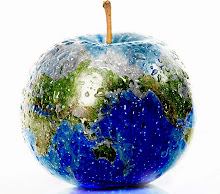Students will be able to:
use information from supplementary reading material and classroom discussions to
-describe the structure of roots.
-explain the job of roots.
-distinguish between herbaceous and woody stems.
-explain the job of stems.
-describe the structure of leaves.
-classify leaves as simple or compound.
Students took a quiz on plants as their do now.
Students also submitted and reviewed home learning 11.
Students continued the notes on roots, stems and leaves. You can find a smilie of notes below:
I. Roots
A. Taproots
a. one large root with many small thin roots growing from the large root.
b. some can store food.
c. examples are carrots, radishes, and dandelions
B. Fibrous roots
a. made of many thin, branched roots.
b. examples are grass, wheat, and barley.
C. Parts of a root
a. root hairs extend from the outer layer of the main root and extend the surface area of the root.
b. inner root made of tubes of the transport tubes to carry water and dissolved minerals upwards.
c. root tip is covered by a root cap to protect it and where new root cells form and grow.
D. Function of roots
a. take in water and dissolved minerals from the soil.
b. anchor or hold plant firmly in the soil.
c. store food in some plants, like carrots.
II. Stems
A. Herbaceous stems
a. smooth, soft, and green
b. plants don’t grow taller than 2 m
c. plants with these stems grow during spring and summer and then die
d. examples are bean and tomato plants
B. Woody stems
a. thick, hard and rough
b. have a rough outer layer of bark
c. may live for many growing seasons
d. grow taller and wider each year
e. includes all trees, like oaks and maples
C. Function of Stems
a. support the leaves
b. transport materials between the roots and leaves
c. some store foods, such as cane or potatoes
D. Stem Structure
a. xylem tubes carry water into the leaves
b. phloem tubes carry dissolved food made in the leaves downward
c. xylem and phloem are together in bundles
III. Leaves
A. Structure
a. made of a stalk and a wide, flat blade
b. photosynthesis occurs in the blade
c. stalk supports the blade and attaches it to the stem of the plant
d. veins are tubes made up of xylem and phloem, connecting them to the stem.
e. veins carry water and dissolved materials into and out of the leaf
f. veins support the leaf blade
B. Kinds of leaves
a. simple leaves have a one piece leaf blade
b. examples of simple leaves are maple, oak and elm
c. compound leaves have leaf blades that are divided into pieces
d. pieces that make up a compound leaf are called leaflets, which looks like a small leaf
e. examples of compound leaves are poison ivy and roses
C. Leaf Tissues
a. epidermis is a protective layer that covers the leaves and prevents the loss of water form the leaf
b. stomata are tiny openings in the upper and lower epidermis, controlled by guard cells that open and close the
stomate to control water loss, the exchange of oxygen and carbon dioxide between the inner tissues of the leaf and
the surrounding air
c. mesophyll is layer beneath the epidermis where the chlorophyll make the food for the plant
Possible Costa's leveled questions:
Level 1: Name the three major plant parts.
Level 2: Compare and contrast taproots and fibrous roots. OR Compare and contrast herbaceous stems and woody stems. OR Compare and contrast simple leaves and compound leaves.
Level 3: Predict what would happen to a plant grown without air or water.
Possible summary: Roots anchor plants in the soil, absorb water and minerals and some store food. Stems support leaves and transport materials between the roots and the leaves. Most leaves have a blade and veins. Leaves can be simple or compound.
Be sure to past home learning 10 into your notebook after these notes. Be sure to use your highlighters to highlight the answers to the questions. Be sure to teach your parent/guardian about roots, stem, and leaves and have them write what they learned and sign the third space on page O of your interactive notebook.
There WILL be a notebook check on Monday!









































